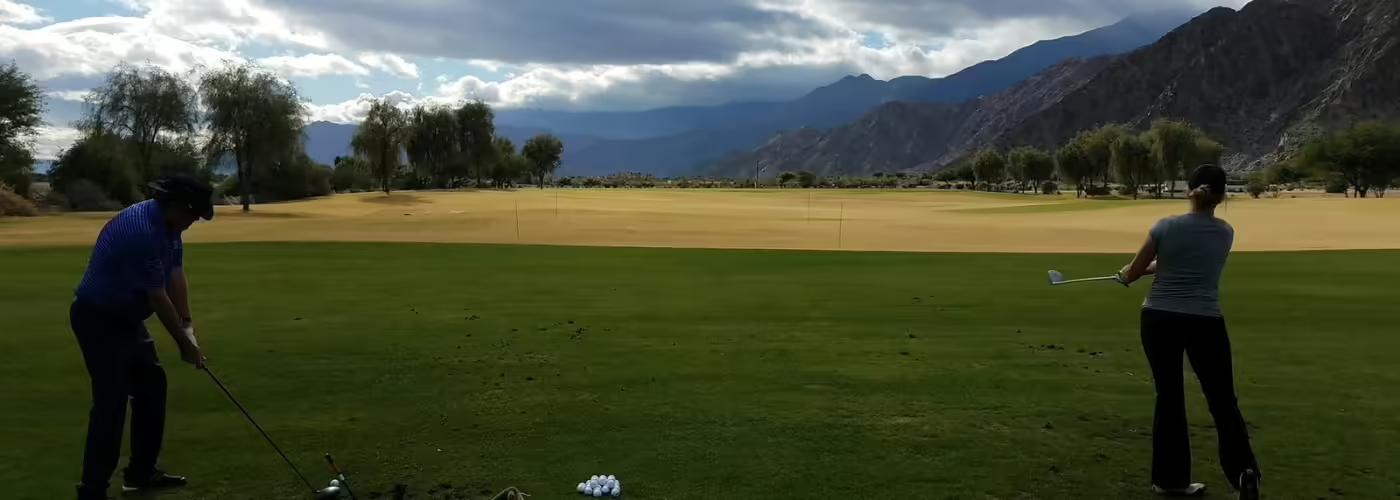Have you ever taken a golf lesson or were given a swing tip by a friend that helped you hit the golf ball better for a short time? For example: you were told to keep your left arm straight in your swing and then all of a sudden you started to hit the golf ball better.
Then a few days later, you would go back to the driving range to practice and lose your swing again. Regardless of how much you focused on the swing tip … you can’t find that wonderful, effortless swing you had a couple of days ago.
We often hear from Golfers that have taken a 30 minute golf lesson or gotten a swing tip from a friend … where they felt they improved … but once on their own at the driving range — they struggled. And then on the golf course – it was a disaster. This is a common occurrence amongst Golfers.
However, it is not the Golfer’s fault. It is the process being used that is holding the Golfer back from keeping the improved results more consistent. An essential part of this process that is often not included is seeing how you take the “improvements” onto the golf course. Followed by going back to the practice range to work on further refinements that are based on how your swing performed on the golf course.
Then after the refinements on the practice range … back to the golf course to judge the latest refinements. And then back to the practice range. And then back to the golf course.
The proof of whether you have improved your golf swing lays totally on how well you hit the golf ball on the golf course … not how you hit the golf ball on the driving range. Why?
Because on the driving range, it is very easy to make compensations to cover-up swing flaws where you’re hitting golf balls at your own pace … as opposed to being on the golf course playing at the pace of the 3 other Golfers in your group and the 4 Golfers behind you.
In addition, on the range, if you hit a bad shot, you can hit multiple golf balls in a row and continually make small tweaks in your golf swing each subsequent shot.
But those tweaks you are making are just more compensations that are being piled onto your existing compensations. And although those extra compensations maybe fine and good when you have the luxury of 105 golf balls on the range tee and hitting at your leisure … it is not fine on the golf course with one golf ball, water, trees, sand, ob and other Golfers to worry about.
At GMS, we believe your golf swing is only as good as it holds up under pressure. And there is more pressure on every shot you take on the golf course versus any shot you hit on the driving range. In fact, you could probably multiple the pressure you feel on a driving range shot by 10 … and still not come close to what you feel on the simplest shot you’ll face on the golf course.
So of course it is easy to find a groove (or a swing) on the driving range … you have everything going your way. It is only your golf swing on the golf course that can tell you if you’re improving.
Think about it this way: you go to the driving range and hit a few good shots. After those first few good shots, your swing falters and you hit 5 or 6 bad shots before you get your swing back. No big deal? Correct?
Well I agree, no big deal on the driving range … but a huge deal on the golf course. Because those first few good shots is just the first hole on the golf course where you’ll make par. But those next 5 or 6 bad shots could end up costing you 8 or 9 strokes on the second and third hole.
So including your chipping, pitching and putting – you went par, double bogey, triple bogey … and you’re 5 over after 3 holes.
Yet on the driving range … those 5 or 6 meaningless shots were just a small blip as you were finding your golf swing.
But when you’re on the golf course … the importance of those shots are magnified … so they aren’t meaningless anymore. And the pressure to make a good golf swing gets greater and greater on each subsequent bad shot until you can’t take it anymore … so your golf swing totally falls apart on the fourth hole as you get more and more frustrated with yourself.
But that probably has never happened to you on the golf course … has it?
The true test of whether you’re working on the correct things in your golf swing should based on if you’re seeing improvement on the golf course. Not 100% improvement every time you play. But small increments of improvement.
If you’re not seeing improvement on the golf course, be wary of: “Well, I’m working on something new in my swing, but I don’t quite have it on the golf course.”
Because if you’re not seeing at least some small improvements on the golf course … it doesn’t matter how much improvement you’re seeing on the range — as no one ever asks “what’s your Driving Range Handicap”.
The Monkey is constantly working on their golf swing on the range
The Player is constantly testing their golf swing on the golf courseGo ahead, be a Player!Regards,Marc Solomon – Your Instructor For Life


